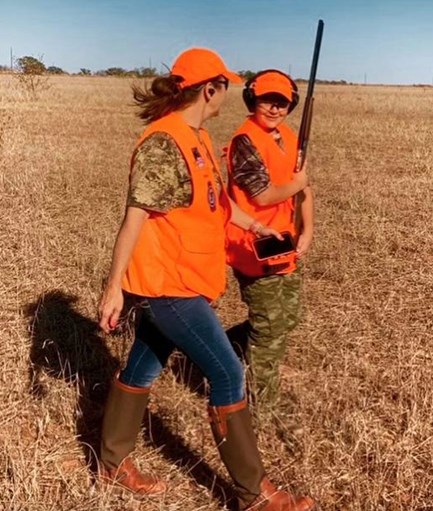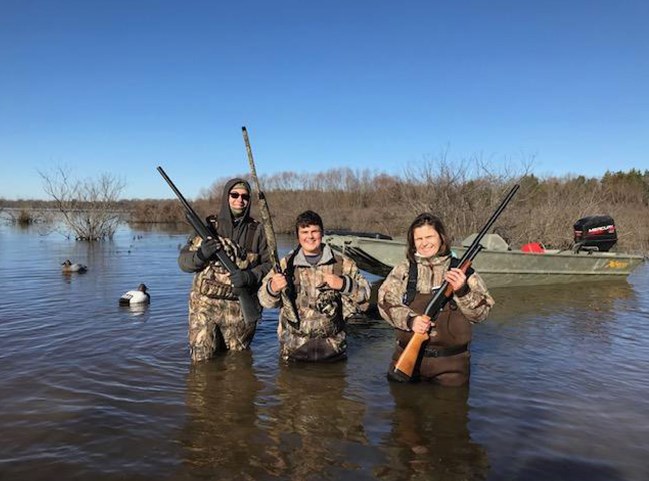
By the late 1800s and early 1900s people flooded into the North American wilderness to take advantage of the seemingly endless bounty of wildlife. These individuals hunted and trapped birds and wildlife species nonstop. They were after fur, feathers, hides and meat from wild animals. Market hunting was flourishing as these “professional market hunters” were destroying the population of literally millions of birds and game animals in the name of trade and profit. During that time there were no rules, no regulations, no laws, and no limits on the number of game animals that were taken. As a result, this unregulated market of hunting and trapping rapidly had a devastating impact.

In the year 1900, Rep. John Lacey (R-Iowa) introduced into Congress the “Lacey Act of 1900” (also known as the 1900 Bird and Game Act), a conservation act signed into law by President William McKinley, making it a federal crime to transport illegally taken wildlife across state lines. It prohibited interstate commerce of poached, or illegally taken, game animals. This was the beginning of the end of market hunting.
In 1929 the Migratory Bird Conservation Act was passed into law. Both laws were beneficial to wildlife but neither helped fund conservation efforts.
In the early 1900s, many of our wildlife species were in trouble. Species such as the American beaver, black bear, Canada goose and wood duck were seeing a large drop in numbers. For example, because of market hunting, there were only an estimated 30,000 wild turkeys, 13,000 pronghorn antelope, 41,000 elk, and 500,000 whitetail deer left in the wilds of the United States. Additionally, the passenger pigeon, once believed to make up 25 percent to 40 percent of the total bird population in the United States, equating to 5 billion at the time America was discovered, was hunted and trapped to extinction.
It was the trappers pushing westward that led to the development of the wilderness. Land was cleared for farming, and trees were cut down to construct buildings. When land is developed, wildlife habitat is destroyed. As a reference, nationwide today, we are losing approximately 2,500 acres of land per day to development. Between 1982 and 1997, more than 41 million acres of rural land was taken over by subdivisions, office complexes, shopping malls and other structures that redefined the landscape. This area is roughly the size of Illinois and New Jersey combined.
During those early years of the 20th century, people recognized how unregulated hunting, trapping and overharvesting were negatively affecting wildlife populations. They also realized how the drastic loss of habitat was also an adverse contributing factor. They knew there had to be a better way to conserve our land, waters, wildlife and irreplaceable natural resources. People began to organize and develop a plan to preserve and conserve the wildlife and hunting opportunities they enjoyed, to ensure it would continue for many generations. Hunting and conservation clubs were formed, programs were developed, and laws were designed to protect our nation’s wildlife and wild places.
Many conservation leaders emerged during this time. Teddy Roosevelt was an outdoorsman and a hunter. Conservation increasingly became one of his main concerns. Known as our “Conservation President,” Roosevelt wrote:
“We have become great because of the lavish use of our resources. But the time has come to inquire seriously about what will happen when our forests are gone, when the coal, the iron, the oil, and the gas are exhausted, when the soils have still further impoverished and washed into the streams, polluting the rivers, denuding the fields and obstructing navigation.”

When he became president in 1901, he used his authority to protect wildlife and public lands. He signed the first U.S. law to provide legal protection of cultural and natural resources on federal lands, the Antiquities Act of 1906, and created the United States Forest Service (USFS) and established 150 national forests, 51 federal bird reserves, 4 national game preserves, 5 national parks, and 18 national monuments. During his presidency, he protected approximately 230 million acres of public land.
In the 1930s, a group of hunters took the lead in conservation efforts. These early conservationists asked to be taxed on the items they use to enjoy the activity they love. They requested a tax on their firearms, ammunition, bows and arrows. The goal of these conservationists was to establish a sustainable funding source for all of these conservation efforts.
Senator Key Pittman from Nevada and Congressman Absalom Willis Robertson from Virginia co-sponsored an excise tax system to provide funding to each state to manage wildlife and habitat. The Federal Aid in Wildlife Restoration Act, or “Pittman-Robertson Act” became law in 1937. This is a partnership between hunters, firearm manufacturers, industry supporters, state wildlife management agencies, and the U.S. Fish and Wildlife Service. There is an 11 percent federal excise tax on guns, ammunition, bows and arrows, and a 10 percent federal excise tax on handguns. At the end of each year, states look at the number of hunting licenses sold, the number of hunters, and other factors that are calculated and these federal excise tax dollars are released back to the states.
These federal excise tax dollars are earmarked and can only be used for conservation. These funds allow biologists to manage more than 500 species of wildlife and help to reintroduce species as well as restore populations. This revenue is also used for 811 target ranges that are operated and maintained using these federal excise tax dollars. Additionally, each year over 1 million people are certified in Hunter Education.

The Pittman-Robertson Act is responsible for outreach efforts through additional training and mentored hunts help connect the public with hunting and shooting opportunities. There are more than 36 million acres of land that is managed for wildlife and habitat. Money sent back to the states is also used to employ wildlife biologists, conservation law enforcement officers, and others in the field who work tirelessly to benefit all the wild places and things. The Federal Aid in Wildlife Restoration program has generated more than $1 billion in 2023, and more than $16.7 billion to date.
Hunting is conservation—hunters pay more than $1.6 billion a year for conservation programs. No other group gives back more money to the resource than hunters! Not only do these funds benefit fish and game species we hunt, but all non-hunted species directly benefit these efforts as well through habitat restoration, conservation programs, education and research.
Today, approximately 60 precent of funding for state fish and wildlife management agencies directly comes from federal excise taxes paid through hunting and fishing licenses and fees. Hunters annually contribute around $149 BILLION to the economy. Additionally, both hunters and shooters create more than $45 billion in salaries, employment positions, and supporting roles to support 970,000 jobs in the conservation arena.
It is because of the conservationists who laid the groundwork before us that we remember and celebrate their hard work and passion that will carry on for generations to follow. There is not one North American animal species that has come close to extinction due to regulated sport hunting. The Pittman-Robertson Act is known as the greatest conservation story of all time. To mark the importance of these efforts, in 1972, Congress established a special day to honor hunters and anglers for their leadership in conserving America’s wildlife and wild places.
Richard Nixon signed the first-ever presidential proclamation of National Hunting and Fishing Day, writing:
"I urge all citizens to join with outdoor sportsmen in the wise use of our natural resources and in ensuring their proper management for the benefit of future generations."
Fifty-two years later, we continue to celebrate the largest and most successful grassroots movement that laid the foundation for a sustainable future for wildlife, habitat and conservation efforts. Celebrated on the fourth Saturday of every September, this federally recognized holiday commemorates the rich tradition of hunting, sport shooting and fishing through local, state and national events focused on introducing new audiences to the outdoors. Events are being offered in every state. Attend an event and bring a friend to introduce them to the great outdoors through conservation efforts in your community.

What can you do to get involved to make sure the greatest conservation story ever written continues to be told for generations to follow? Take the pledge to take someone hunting, fishing, or shooting this year and you can be entered in a National Hunting and Fishing Day giveaway!















































